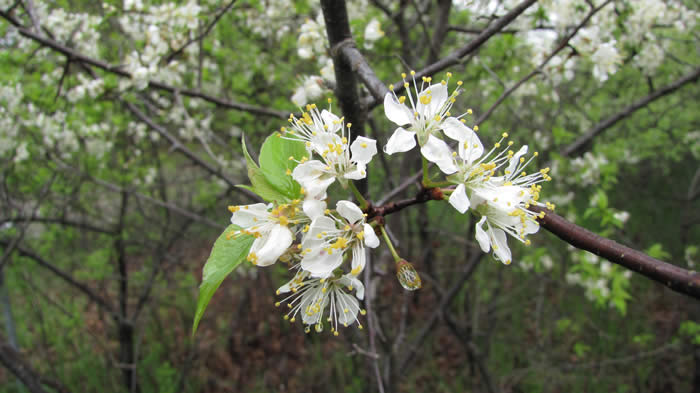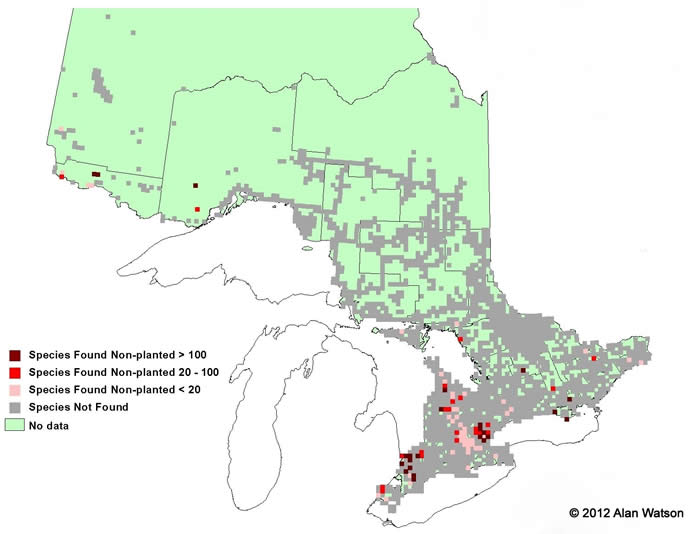Wild Plum - Prunus americana
Wild Plum, also known as American Plum, is native to Southern Ontario but can be found widespread across Canada as an ornamental tree. This fast-growing tree has beautiful, fragrant flowers, and edible fruits that are valued for their use in pies and preserves. Despite the edible fruits, other parts of the tree including leaves and Plum stones, contain the toxic hydrocyanic acid and should never be consumed. Many other animals love to eat the juicy fruits of this tree in late summer, including foxes, white-tailed deer, and many birds. Wild Plum often grows along streams and river edges, where it helps to prevent erosion and stabilize banks.

Wild Plum bursts into bloom in early spring with very fragrant, white clustered flowers, often before the leaves expand. Each flower is about 25 mm across and are gathered together in clusters called umbels. Photo by Chris Earley.

Wild Plum fruit begins to ripen in late August, producing waxy, small (2-3cm) plums ranging in colour from yellow to red. The flesh of the Wild Plum can be either sweet or sour. Photo by Chris Earley.

Leaves of the Wild Plum are 6-10 cm long and slightly hairy. They are single or double toothed, having sharp teeth that are not gland-tipped. Photo by Sean Fox.

Ontario Tree Atlas map of non-planted Wild Plum. 1995-1999.
References
Farrar, J.L.. 1995. Trees in Canada. Fitzhenry & Whiteside Ltd. Toronto. ON. 504 pp.
Kershaw, L. 2001. Trees in Ontario: Including tall shrubs. Lone Pine Publishing. Edmonton. AB. 240 pp
Muma, W. 2011. Ontario Trees and Shrubs. [Online] Available: www.ontariotrees.com
OMNR, 2011. Ontario Ministry of Natural Resources: Ontario Tree Atlas. [Online] Available: http://www.mnr.gov.on.ca/en/Business/ClimateChange/2ColumnSubPage/267027.html
OMNR, 2008. Ontario’s Biodiversity: Species at Risk.